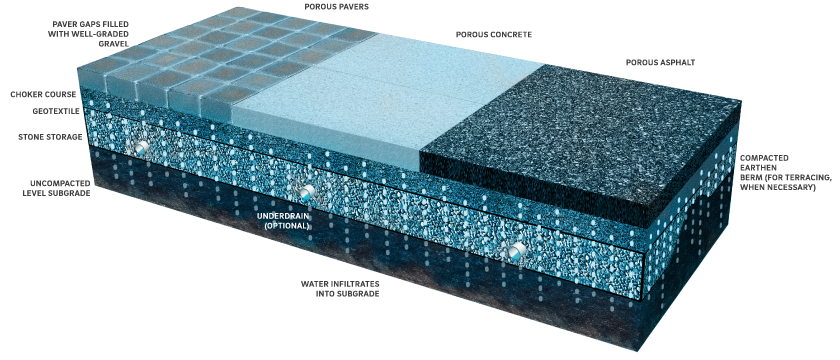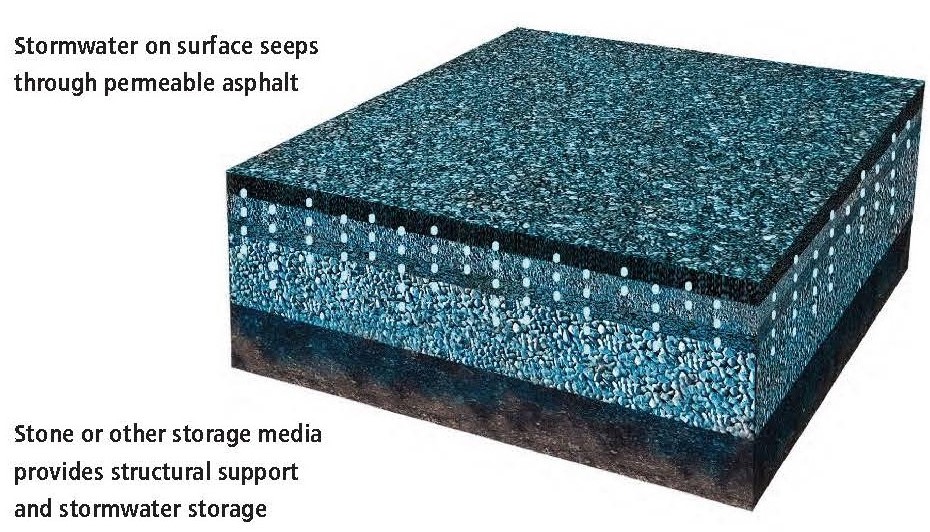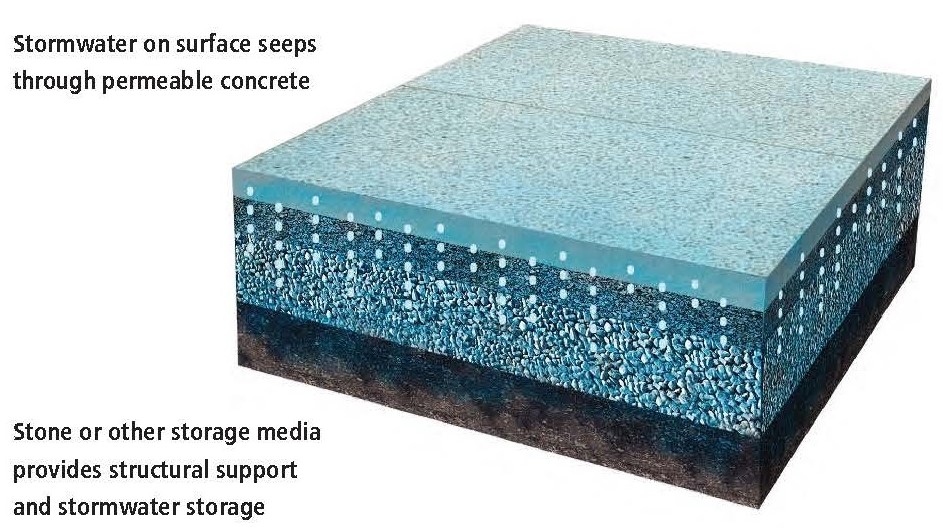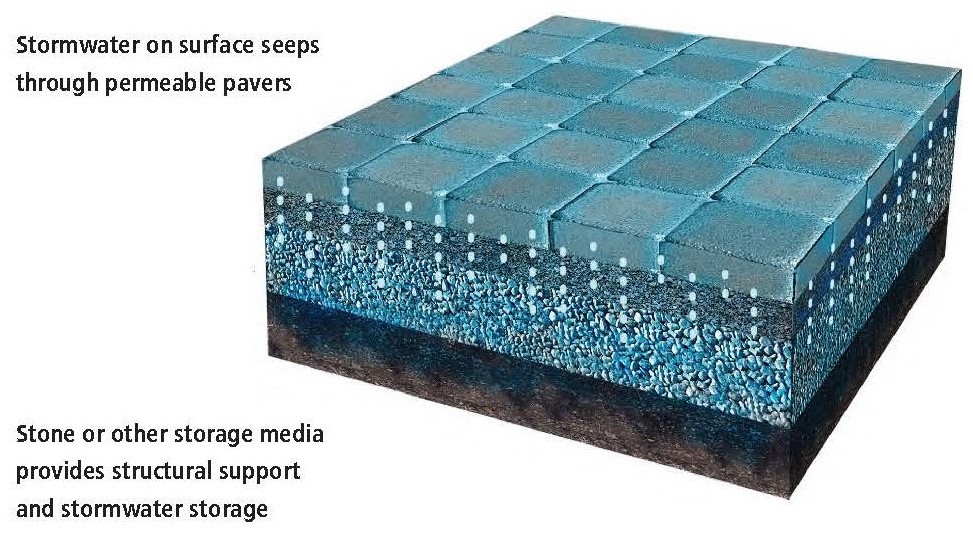Permeable or porous pavement allows water to soak through the surface rather than flow over the surface and into storm drains. This system provides the structural support of conventional pavement but also has an underground stone reservoir.
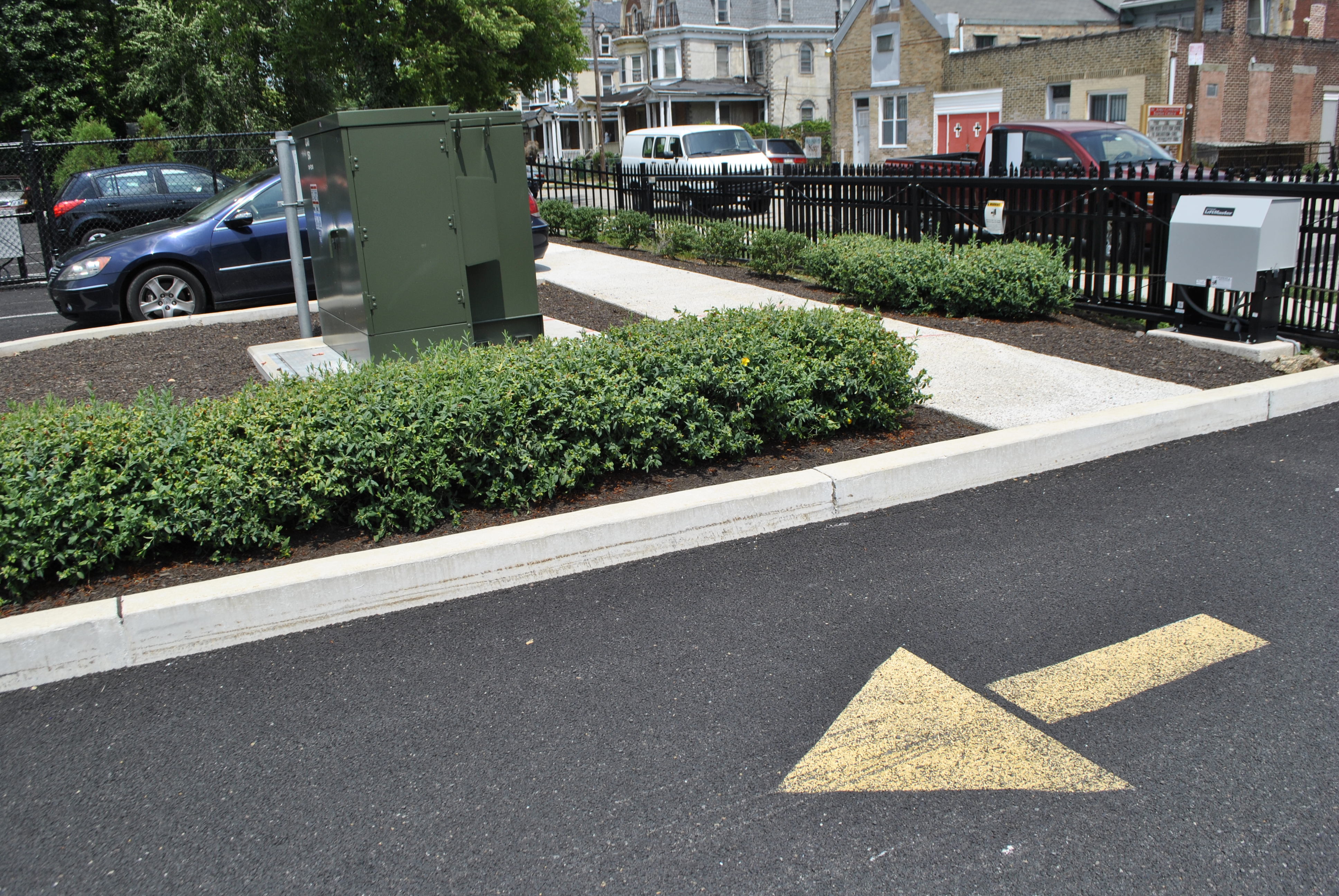
Porous pavement allows water to infiltrate through the surface and never become runoff. This system provides the structural support of conventional pavement but is made up of a porous surface and an underground stone reservoir. The stone reservoir provides temporary storage before the water infiltrates the soil. There are many different types of porous surfaces, including pervious asphalt, pervious concrete, and interlocking pavers. Interlocking pavers function slightly differently than pervious concrete, and asphalt. Rather than allowing the water to penetrate through the ground, pavers are spaced apart with gravel or grass to allow for infiltration.

